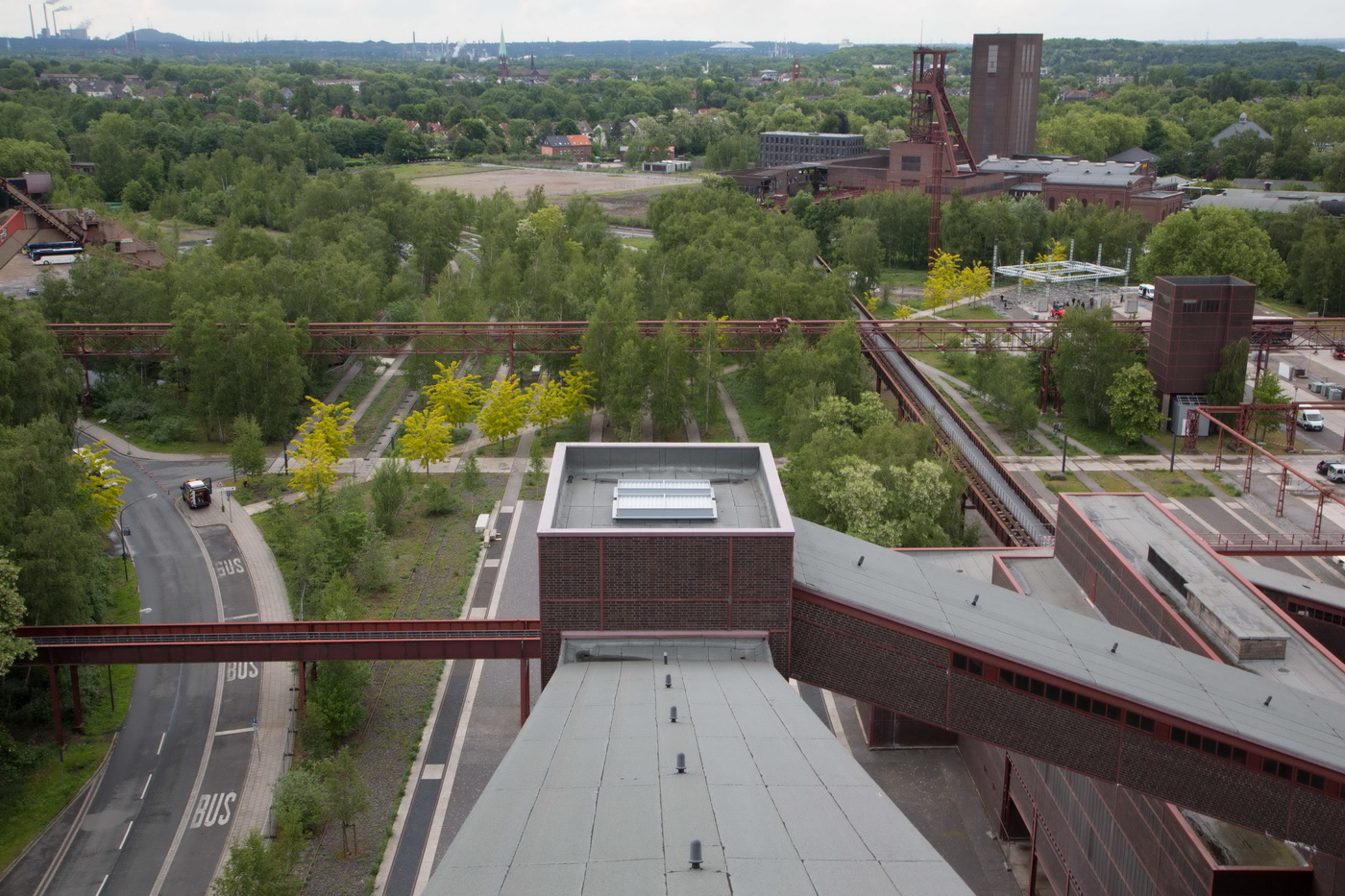

The biggest and most modern colliery in Europe was created when the Zollverein Schacht XII – Katernberg colliery was built in 1928. Architects Fritz Schupp and Martin Kremmer used functional cubic elements to create a fascinating architectural ensemble in the Neue Sachlichkeit (New Objectivity) style.
The impressive buildings were placed under historical preservation as excellent examples of this kind of industrial architecture after the colliery closed down in 1986. The former boiler house, now the headquarters of the renowned Design Zentrum Nordrhein-Westfalen, was redesigned by star architect Norman Foster in the mid-nineties.
One aim of the Internationale Bauausstellung Emscher Park (IBA) in the 1990s was to restructure disused industrial land and to improve living conditions in the region with ecologically-orientated redevelopment. A further goal was to provide forward-looking ideas in the form of offers for social and cultural institutions. These goals have been achieved at Zollverein in an exemplary manner.
As the most important major project at the IBA, the cultural landscape at Zollverein is a model example of successful structural change in the Ruhr area. It was therefore awarded the status of a “world heritage site” by UNESCO in 2001.
A short distance away, a huge area of disused industrial land literally lies in the shadow of this impressive architectural ensemble. Ulrich Rückriem’s sculptures provide fixed points and calm areas for meditation in the huge expanse of land, the barren areas of which still testify to the destruction inflicted on the landscape by the energy of the Montan period.
Links
Zollverein
Panorama-Fotos